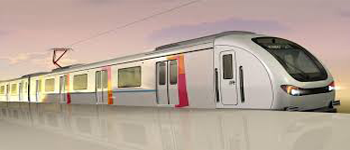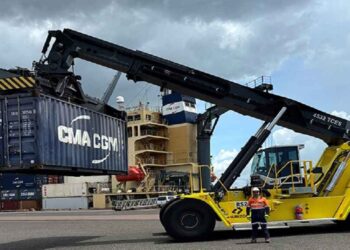Automotrice Grande Vitesse (AGV) is an advanced very high speed train designed and developed by Alstom. It is claimed to be the most economical and eco-friendly railcar in the world. It was showcased at the InnoTrans 2008 exhibition held in Berlin, Germany. The maximum operating speed of the AGV is 360kmph.The AGV is scheduled to enter service with the Italian Rail Network on the Napoli to Milan rail lines on 28 April 2012. It is built in different sizes including seven-car, eight-car, ten-car, 11-car and 14-car configurations.
Italian order for Alstom’s AGV 11-car trains
Italy-based Nuovo Trasporto Viaggiatori (NTV) awarded a €650m ($955m) contract to Alstom in January 2008 to supply 25 AGV 11-car trains with an option to procure ten more trains in the future. The first 17 AGVs were built at the La Rochelle plant in France, with the remaining made at Savigliano in Italy.
Energy efficient design of the Automotrice Grande Vitesse (AGV)
The AGV is the most energy efficient railcar designed adhering to the Technical Specifications for Interoperability (TSI) standards. It is the world’s first train design to combine articulated carriage architecture with a distributed traction system and synchronous permanent magnet motors (PMM). It is built with aluminium alloys to reduce the overall weight by 700kg compared to using steel.The train has a conical front bay to render clear visibility to the driver. Two signalling cabinets are present in the driver’s cabin to incorporate all the signalling equipment.The interior design is flexible to provide operators with customised options for interior shapes and colours.
Seats, luggage racks and partition walls can be added or detached during the operational life of the train. Each car shares a bogie with a neighbouring car, forming a semi-rigid link between the cars.The AGV boasts an electrodynamic braking system (EBS), kinetic energy absorption unit (KEAU) and electrically aided active suspension for providing a smooth travel experience.The EBS comprises energy recovery and rheostatic braking mechanism, which retrieves the electrical energy generated when brakes are applied. The mechanism recovers eight megawatts of electricity and feeds it to the grid network,thus generating energy for reuse.The KEAU protects the driver and passengers in the front-most car during collisions. It can absorb 4.5MJ of shock.
Features and passenger facilities of the Alstom’s very high-speed trains
The AGV features large interior compartments, wide gangways, large window surfaces and a HVAC system. Passenger facilities include Wi-Fi, onboard internet and live television. A 39-seat cinema car in the train provides entertainment to the passengers onboard.
Development of the Automotrice Grande Vitesse since June 2004
The development of the first AGV prototype began in June 2004. A physical mock-up of the AGV was displayed at Milan’s Eurailspeed trade expo in November 2005.
The maiden AGV was built in February 2007. First wheel rotation was carried out in October 2007. It was first unveiled at the La Rochelle plant in February 2008. It was delivered to the railway test centre in Velim, Czech Republic, in May 2008 for testing.
Dynamic tests of the AGV with medium speed of 200km/h were carried out between April and September 2008. The train accomplished a designed speed of 360km/h during the high-speed dynamic tests carried out on the 170km section of the TGV Eastern high speed line in November and December 2008.Construction of the first AGV was completed in May 2010. The service entry was initially scheduled for September 2011 but postponed to 2012 due to delays in the certification. The AGV was certified in December 2011.
Propulsion of the Alstom’s AGV with the Onix traction system
The AGV is powered by the Onix traction system, which comprises 6.5kV IGBT power modules, a 3,600v power bus and permanent magnet motors. The traction system is integrated below the body shell of the cars, which saves space and enables it to carry 20% more passengers. Each motor axle is powered by an individual Onix power inverter.An 11-car AGV train is fitted with six independent traction units. The shut-down of one power module in this configuration will result in the loss of only 1/6th of the efficient train traction power.

































